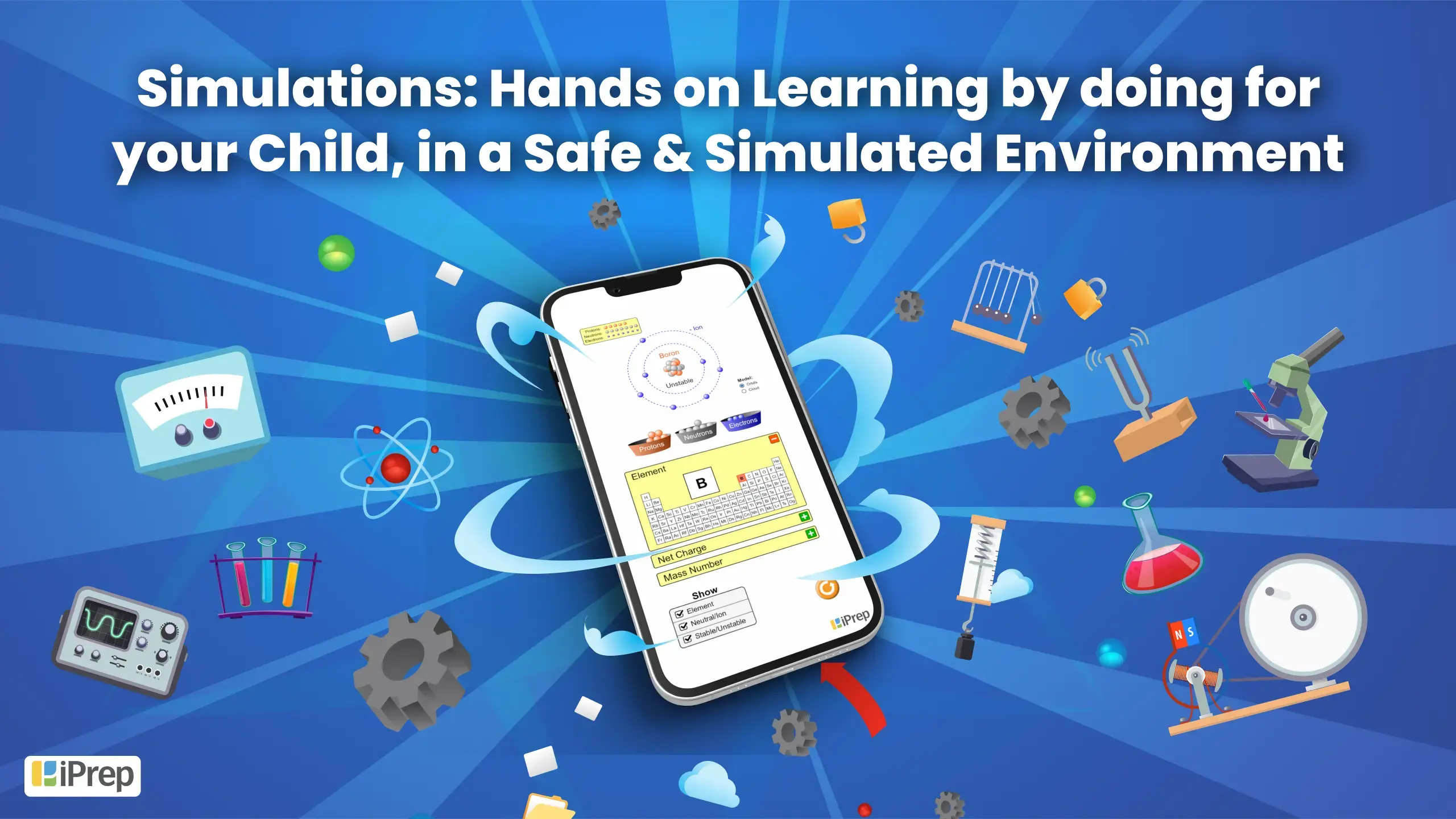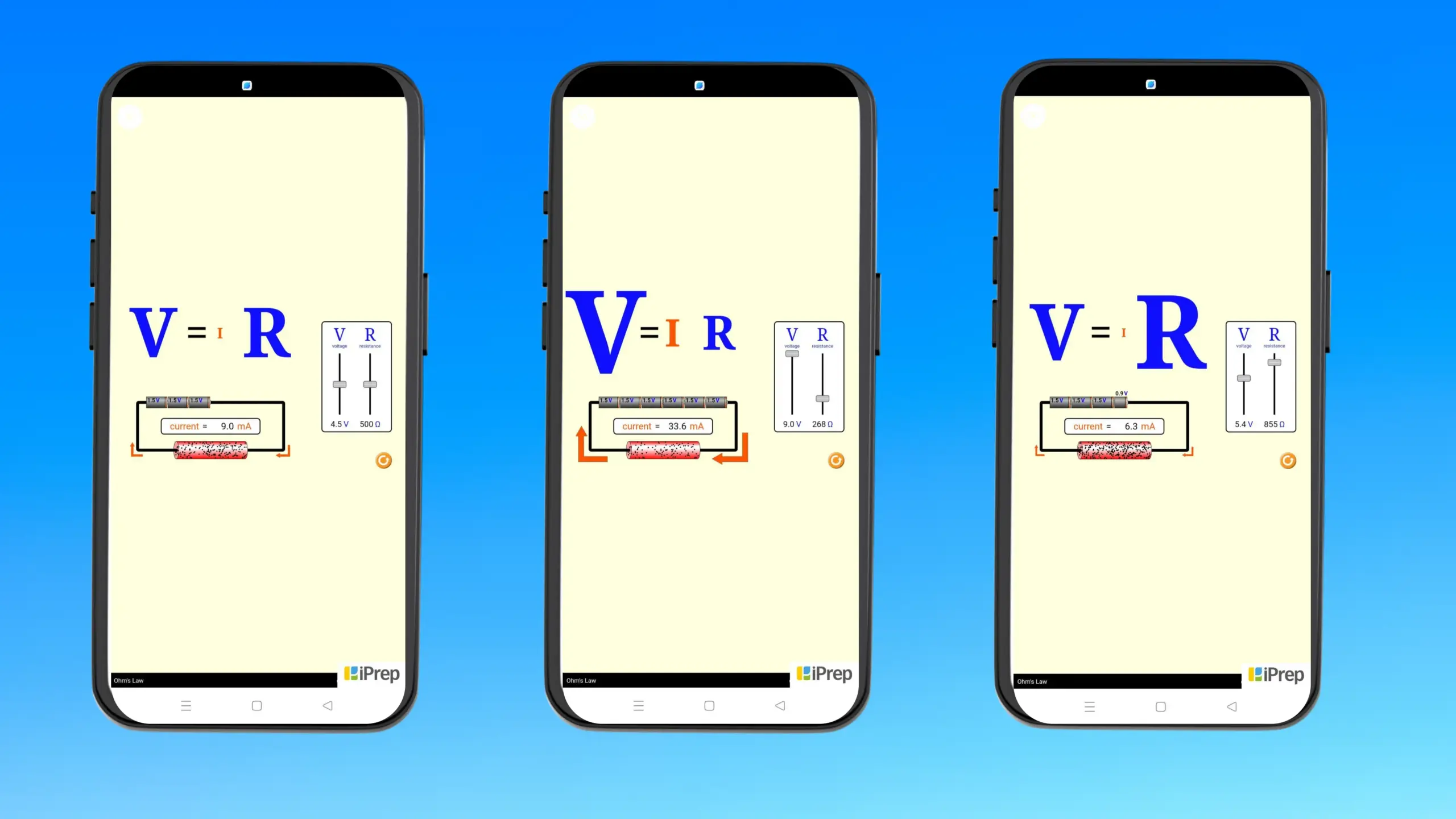Simulations for Kids: Hands on Learning by Doing for your Child, in a Safe & Simulated Environment

Before we start discussing the main theme of the blog: simulations for kids, let me ask you a few pertinent questions-
Do you remember Ohm’s law? Maybe some of you do, but others like me might be staring blankly, trying to recall those long-ago school lessons.
As a kid, I struggled with science, and I bet many of you did too. I managed to pass my exams thanks to private tutors because the textbooks and classroom lessons just didn’t cut it for me.
You probably had your own ways to get through.
But most of us have forgotten what we learned back then, right?
Kids and Learning in the Digital World
Does your child also find science challenging? What are you doing to help? Even if they understand it now, how can you ensure that the learning sticks?
Let’s talk about it.
We all know the sight of a child glued to a smartphone. But do your kids show the same enthusiasm for their textbooks? Probably not.
So, what is it that keeps children hooked to phones and virtual platforms for hours?
The simple answer is the interactivity, vibrancy, and the sense of control they get over their virtual world.
Today’s children are digital natives. They’re used to instant access to information and endless choices on shopping apps, food delivery services, TV, and games. Expecting them to learn through traditional methods like textbooks and lectures is unrealistic. Modern students crave control, initiative, and variety in their learning experiences.
Luckily, there’s been a shift towards child-centric and constructivist learning in recent decades. This means students aren’t just passive receivers of knowledge—they’re active builders of their understanding.
The Answer: Simulations for Kids
One traditional method we know well is practical and hands-on learning. But making every concept hands-on in school is impractical. And let’s be honest, helping your child do it frequently at home is a challenge—we all dread the mess afterwards! No guilt in that, parents.
While technology often seems like the culprit, distracting children from their studies, it can actually be the solution. Yes, tech to the rescue again!
What if I told you there’s a way for your child to learn hands-on, safely, and without the mess?
Introducing: Digital Simulations for Kids
These have emerged as one of the most effective ways for children to learn hands-on in a safe environment, ensuring clear concepts and lasting learning.
So, what exactly are simulations for kids?
Simply put, a simulation is a way of learning by doing. It fits perfectly with teaching methods that focus on the student, allowing them to control what and how they learn. Instead of just listening to information, students build their understanding through hands-on experiences and interactions.
Simulations are unique because they challenge students to think for themselves and make decisions, which can seem overwhelming at first. They create real-world scenarios to test students’ understanding and practical application of concepts.
Once students start using simulations for a topic, they practically learn the concept for life.
Let’s break down some of the practical problems that simulations can solve for your child and you:
- Engagement: Your child stays engaged because the learning is exciting and interactive.
- Easier Understanding: Complex concepts become easier and faster to grasp.
- Hands-On Without the Mess: Your child gets hands-on experience without any mess.
- Instant Feedback: Simulations provide instant feedback, helping clarify doubts immediately.
- Critical Thinking: Your child develops critical thinking and problem-solving skills.
Sounds like a win-win, right?
Learning Science through Simulations
Let’s further understand this by visiting Ohm’s law again.
Ohm’s law states that the current through a conductor between two points is directly proportional to the voltage across the two points and inversely proportional to the resistance between them (V=IR).
Sounds confusing, right? This is how many of us learned it from textbooks.
Now let’s look at the images below:

The images explain the law by changing the variables. For example, if V = IR (V for voltage, I for current, and R for resistance), changing the voltage or resistance will alter the flow of current.
Makes more sense now, right?
Now, imagine a scenario where you can actively manipulate the variables V and R to see how I changes, but in a virtual and safe space without physically interacting with any components.
That’s exactly what simulations make possible!
Let’s have a look at the video below:
Introducing iPrep Simulations for Kids
The visuals and videos you see above are from the iPrep, a K-12 app that offers unlimited learning. It’s available for subjects like math, science, physics, chemistry, and biology. These simulations are designed to be simple, colourful, and engaging, explaining each concept beautifully and concisely for students from grades 8 to 12.
iPrep features almost 500 simulations (in English and Hindi) aligned with NCERT standards. Each simulation starts with an introductory section to familiarize users with all the variables and conditions before diving into the main experiment. Plus, the simulations are gamified, making learning not only educational but also fun and interactive. They simplify complex concepts and help students retain information longer.
iPrep simulations are also available for school and classroom use. Teachers can use them as effective tools to create safe virtual environments for students to practice hands-on learning.
How Can iPrep Simulations Help Your Child Learn Better?
Realistic Scenarios
iPrep simulations for kids create a realistic and immersive learning experience by mimicking real-world situations. Watch your child explore experiments and see how changing variables leads to different outcomes—just like in the videos above.
Engagement
Say goodbye to boring lessons. iPrep’s simulations for kids are interactive and fun, keeping your child hooked. Such focused attention will definitely make a deeper cognitive impact and help your child understand better and remember concepts for good.
Flexibility
Everyone learns differently, and we get that. iPrep simulations offer rich visuals and adapt to various learning styles, so your child can learn in the way that works best for them.
Cost-Effectiveness
With nearly 500 simulations for kids across subjects and grades, iPrep is a budget-friendly choice for you. The simulations also reduce the need for physical materials and traditional classroom resources further easing your pocket.
Safe Learning Environment
As parents, keeping your child safe is probably your top priority. iPrep gives your child a secure space to experiment and learn without any risks. This is especially great for science subjects, where real-world experiments can sometimes be dangerous.
Improved Learning Outcomes
Once your child starts using simulations you can definitely expect an improvement in academic performance and grades. This assertion is based on actual scientific research. Research from the University of Central Florida found that simulation-based training can boost learner performance by up to 20% compared to traditional methods.
Environmental Impact
Today, we encounter climate change and threats to the environment on a regular basis. iPrep simulations reduce the need for physical materials, cutting down on waste. Your child can learn and help the environment at the same time.
Learn more:
Want to Engage Every Student? Simulations Might Be the Answer
In conclusion
Simulations for kids offer a powerful, engaging, and safe way for your child to learn. They cater to modern students’ needs, making complex concepts easier to understand and retain in a fun and engaging way.
Why not give the iPrep simulations for kids a try and see the difference they can make in your child’s education?



